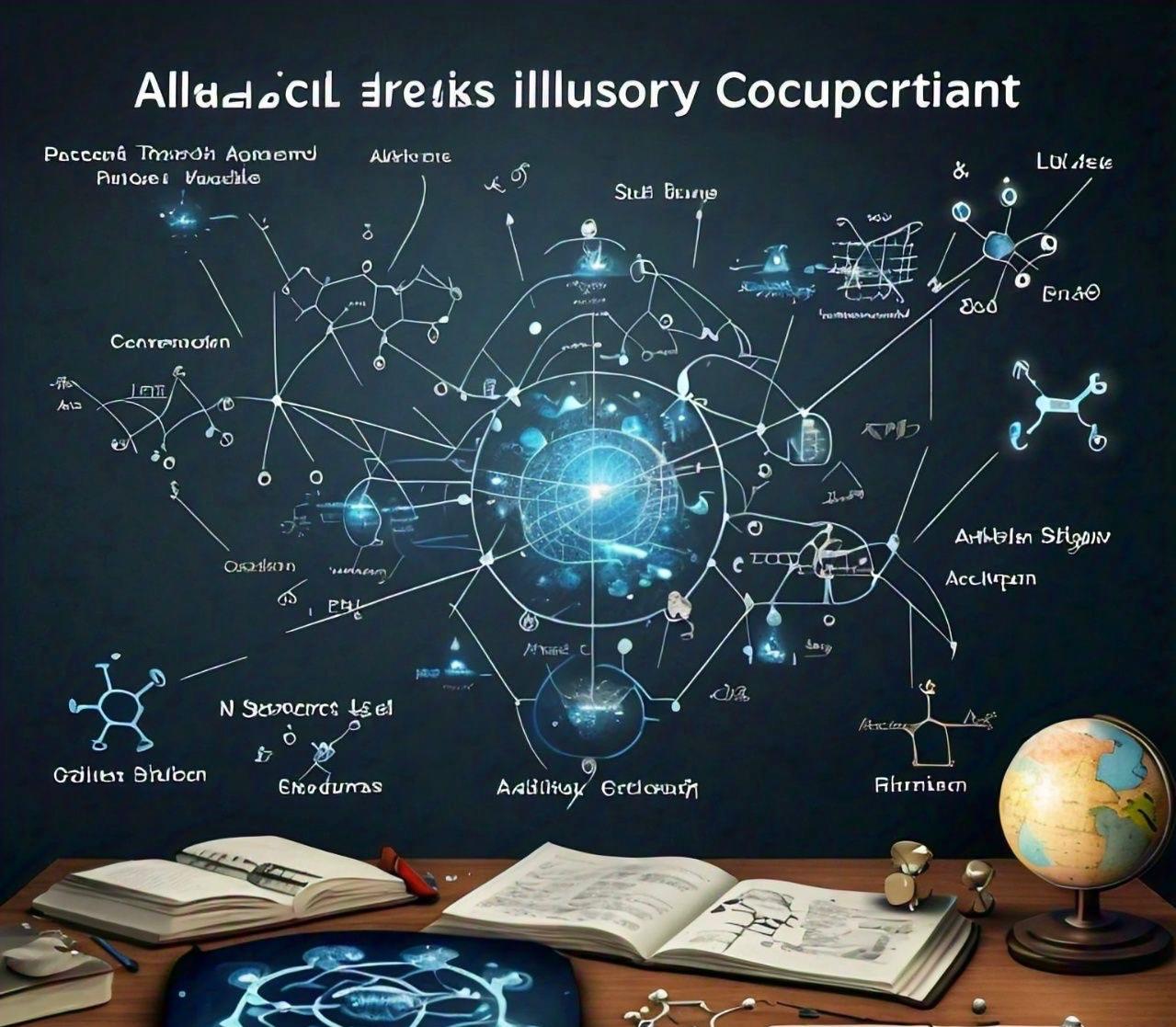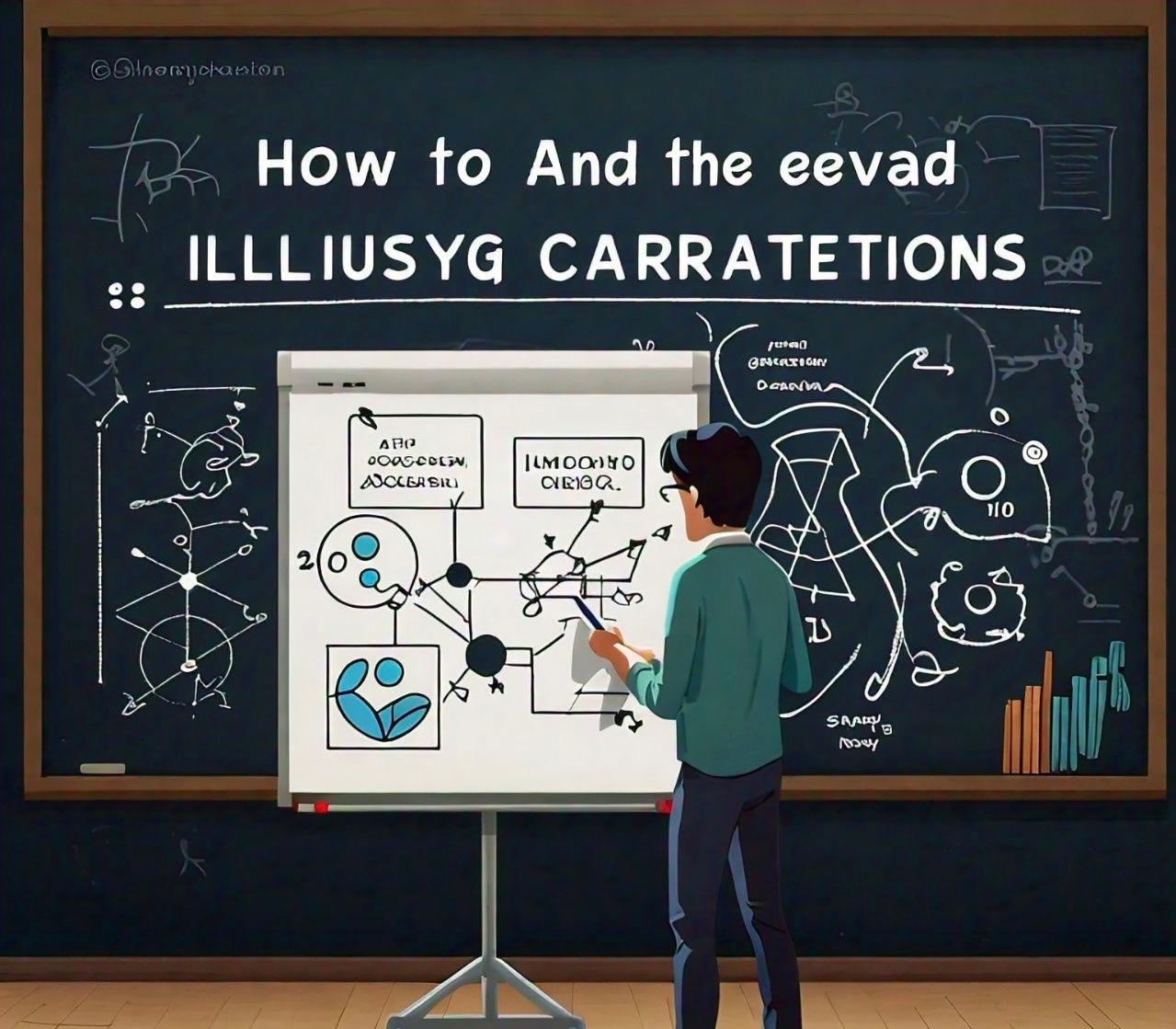
Illusory correlation is a psychological phenomenon where people perceive a relationship between two variables (events, behaviors, objects) when no such relationship actually exists. The science behind this illusion lies in how our brain processes information, uses mental shortcuts, and fills in gaps when making sense of the world.
Recommended Reading: Unlocking the Potential of Robotics with Free Robotics Classes
What is Illusory Correlation?
Illusory correlation refers to the perception of an association between two unrelated variables. This often arises because the brain looks for patterns as a cognitive shortcut to process information efficiently. The brain relies on heuristics, which are mental shortcuts that reduce the complexity of decision-making. While these shortcuts are beneficial for quick decisions, they sometimes lead to errors, such as illusory correlations.
How Illusory Correlation is Seen

Imagine Jane, a dedicated football fan, who always wears her lucky jersey when watching her favorite team, the “Guardians.” Over time, Jane noticed that every time she didn’t wear her jersey, her team lost the game. Although there is no logical connection between her outfit and the team’s performance, her brain establishes an illusory correlation between the two events.
This example demonstrates how illusory correlations manifest in daily life. The two variables—wearing a jersey and the success of the team—are not causally connected, yet the mind perceives them as linked.
The Role of Cognitive Bias in Illusory Correlation

Illusory correlations are driven by various cognitive biases, especially when certain events stand out more prominently than others. One of the primary biases behind illusory correlation is confirmation bias, which occurs when individuals seek evidence that supports their existing beliefs while ignoring contradictory information. In Jane’s case, she focuses on instances when she wore the jersey and her team won but overlooks the times when they won without her wearing it.
Another key player in this phenomenon is the availability heuristic. This is when we rely on information that comes to mind quickly because it’s either vivid or frequently repeated. Our brains overestimate the association between distinct or unusual events, causing us to create false patterns between unrelated variables.
Scientific Examples of Illusory Correlation

1. Finance and Stock Patterns
In financial markets, investors often fall prey to illusory correlations. A classic example is the “head-and-shoulders” stock price pattern, which some traders believe predicts future downtrends. While technical analysts assert that this pattern forecasts a fall in stock prices, research has shown that the correlation between this pattern and actual price movements doesn’t exist. This mistaken belief leads to suboptimal decision-making and impacts trading volumes significantly. This financial misconception stems from the human tendency to detect patterns, even when none truly exist.
2. CEO Compensation and Golf
A study conducted in Europe explored how CEOs who perform well at golf receive higher compensation. The science behind this illusory correlation lies in the halo effect, where an individual’s skills in one area, like golf, influence how they are perceived in unrelated areas, like corporate performance. However, in reality, the researchers found a negative correlation between golfing performance and business success. Despite this, the link between golfing skills and higher pay persists, exemplifying how illusory correlations can shape decision-making at institutional levels.
Scientific Theories Behind Illusory Correlation

Illusory correlations occur due to expectancy-based and distinctiveness-based heuristics.
1. Expectancy-based illusory correlations arise when individuals see relationships based on pre-existing beliefs and expectations. For example, if you believe a certain brand of shoes is of higher quality, you might incorrectly attribute its durability to that perception, even when there’s no objective evidence for it.
A fun way to explore how preconceptions shape our thinking is through easy science experiments demonstrating expectations’ impact. For instance, in experiments where participants are given two identical objects but told one is superior, they may perceive it to perform better simply due to the power of expectation.
2. Distinctiveness-based illusory correlations occur when people focus too much on salient, noticeable information. A classic study demonstrated this by showing that people overestimate the occurrence of negative behaviors by minority groups because negative actions and minorities both stand out. As a result, they mistakenly believe that minority groups are disproportionately responsible for undesirable behavior.
The Brain’s Role in Illusory Correlation
The brain’s reliance on heuristics explains why illusory correlations are so pervasive. Heuristics are cognitive strategies that help us solve problems efficiently, but sometimes they lead to errors in reasoning. From an evolutionary standpoint, humans developed pattern-recognition skills for survival. In ancestral environments, identifying real patterns (e.g., recognizing the connection between animal tracks and the presence of prey) was crucial. However, in modern society, the brain’s pattern-seeking tendencies can misfire, resulting in illusory correlations.
Neuroscientific studies have shown that the brain’s amygdala (involved in emotional processing) and prefrontal cortex (associated with decision-making and Rational Thinking) play key roles in forming illusory correlations. The amygdala may amplify emotional connections between two events, leading the prefrontal cortex to mistakenly associate them. This misalignment between Cognitive Thinking and emotional processing makes it challenging to differentiate between real and illusory patterns.
Consequences of Illusory Correlation in Society
Illusory correlations can lead to negative outcomes, especially in areas like policy-making and institutional decisions. For instance, policymakers might notice an increase in crime rates among minority populations without recognizing that it’s a result of selective media reporting. These false correlations can lead to unjust policies, such as increased law enforcement targeting certain groups.
Another societal impact is the perpetuation of stereotypes. Illusory correlations contribute to the development and reinforcement of social stereotypes. When individuals see certain behaviors disproportionately attributed to specific groups, even though there’s no real correlation, harmful biases and discrimination arise.
How to Avoid Illusory Correlations

To minimize the effects of illusory correlations, it’s essential to approach situations with scientific skepticism and evidence-based thinking. Here are some strategies based on cognitive research:
1. Critical Thinking is essential when evaluating correlations to avoid making decisions based on gut feelings or biases. Instead of jumping to conclusions, it’s important to question perceived associations and analyze them thoroughly.
By applying critical thinking, we challenge our assumptions and focus on evidence-based reasoning. Seeking out scientific evidence to support or refute these associations ensures a more accurate understanding and helps avoid the pitfalls of illusory correlations.
2. Education: Illusory correlations are more likely to occur when individuals have little knowledge of a particular area. By increasing awareness and knowledge, people are less susceptible to false associations. According to a 2011 study, educational programs can help individuals identify and reduce their tendency to form illusory correlations.
3. Diverse Data Sources: Relying on a single source of information increases the likelihood of developing false beliefs. It’s important to gather data from multiple, reliable scientific sources to make informed decisions.
Conclusion
The phenomenon of illusory correlation shows how deeply ingrained our brain’s need for pattern recognition is. While this tendency helps us navigate the world quickly, it can lead us astray when it comes to unrelated events. By understanding the science behind illusory correlations—how our brain uses heuristics and cognitive biases—we can become more aware of when we’re falling into these mental traps.
Fostering a scientific mindset, embracing critical thinking, and grounding decisions in data can help us overcome the illusory correlations that subtly influence our lives. As science continues to explore the complexities of human cognition, recognizing these mental errors allows us to make more accurate judgments and avoid the pitfalls of false associations.
Looking for a comprehensive parenting guide to ensure you are on the right track? Explore a wealth of parenting wisdom and educational insights in Moonpreneur’s blogs. Additionally, you can join our programs that nurture the next generation of innovators. Book a free trial now!


























I was wondering, does illusory correlation also play a role in the way social media algorithms influence the content we see, by reinforcing certain patterns that might not actually exist?
It got me thinking about how this cognitive bias plays a significant role in the development and persistence of superstitions. It involves perceiving a relationship between two unrelated events or variables when, in reality, there is no connection.